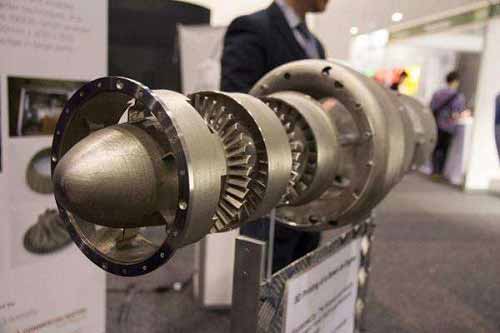Nanoparticles to improve the strength of 3D printed Inconel 625 superalloys.(HY-industry technical centre)


Nanoparticles to improve the strength of 3D printed Inconel 625 superalloys.(HY-industry technical centre)
 Researchers at the A*STAR Institute of Manufacturing Technology and the Institute of Materials Research and Engineering used titanium diboride nanoparticles to improve the physical, thermal, and mechanical properties of 3D printed superalloys.
Researchers at the A*STAR Institute of Manufacturing Technology and the Institute of Materials Research and Engineering used titanium diboride nanoparticles to improve the physical, thermal, and mechanical properties of 3D printed superalloys. Scientists at the science and technology research institute A*STAR have recently conducted research to make superalloy applications better. By adding special nanoparticles to 3D printed superalloys, researchers (from the Institute of Manufacturing Technology and the Institute of Materials Research and Engineering) have managed to make materials stronger while reducing the likelihood of material breakage.Inconel 625 is a superalloy favored by A* STAR researchers. Inconel 625 is a solid solution-strengthened nickel-based deformed superalloy with molybdenum and niobium as main strengthening elements. It has excellent corrosion resistance and oxidation performance, from low temperature to 980. °C has good tensile properties and fatigue properties, and is resistant to stress corrosion under a salt spray atmosphere. Therefore, it can be widely used in the manufacture of aero-engine components, aerospace structural components and chemical equipment. The alloys are well processed and welded to supply a wide range of sheets, rods, tubes, wires, strips and forgings.
Scientists at the science and technology research institute A*STAR have recently conducted research to make superalloy applications better. By adding special nanoparticles to 3D printed superalloys, researchers (from the Institute of Manufacturing Technology and the Institute of Materials Research and Engineering) have managed to make materials stronger while reducing the likelihood of material breakage.Inconel 625 is a superalloy favored by A* STAR researchers. Inconel 625 is a solid solution-strengthened nickel-based deformed superalloy with molybdenum and niobium as main strengthening elements. It has excellent corrosion resistance and oxidation performance, from low temperature to 980. °C has good tensile properties and fatigue properties, and is resistant to stress corrosion under a salt spray atmosphere. Therefore, it can be widely used in the manufacture of aero-engine components, aerospace structural components and chemical equipment. The alloys are well processed and welded to supply a wide range of sheets, rods, tubes, wires, strips and forgings. After the researchers performed 3D printing on the material, the superalloy was analyzed and it was found that the titanium diboride nanoparticles were mainly concentrated at the boundary between the Inconel 625 grains. Therefore, it is concluded that titanium diboride can be used to strengthen the grain boundary (the grain boundary is the same structure and the interface between different grains is oriented. At the crystal interface, the atomic arrangement transitions from one orientation to another, so the grain boundary The atomic arrangement is in a transitional state. The interface between the grain and the grain is called the grain boundary.).
After the researchers performed 3D printing on the material, the superalloy was analyzed and it was found that the titanium diboride nanoparticles were mainly concentrated at the boundary between the Inconel 625 grains. Therefore, it is concluded that titanium diboride can be used to strengthen the grain boundary (the grain boundary is the same structure and the interface between different grains is oriented. At the crystal interface, the atomic arrangement transitions from one orientation to another, so the grain boundary The atomic arrangement is in a transitional state. The interface between the grain and the grain is called the grain boundary.).